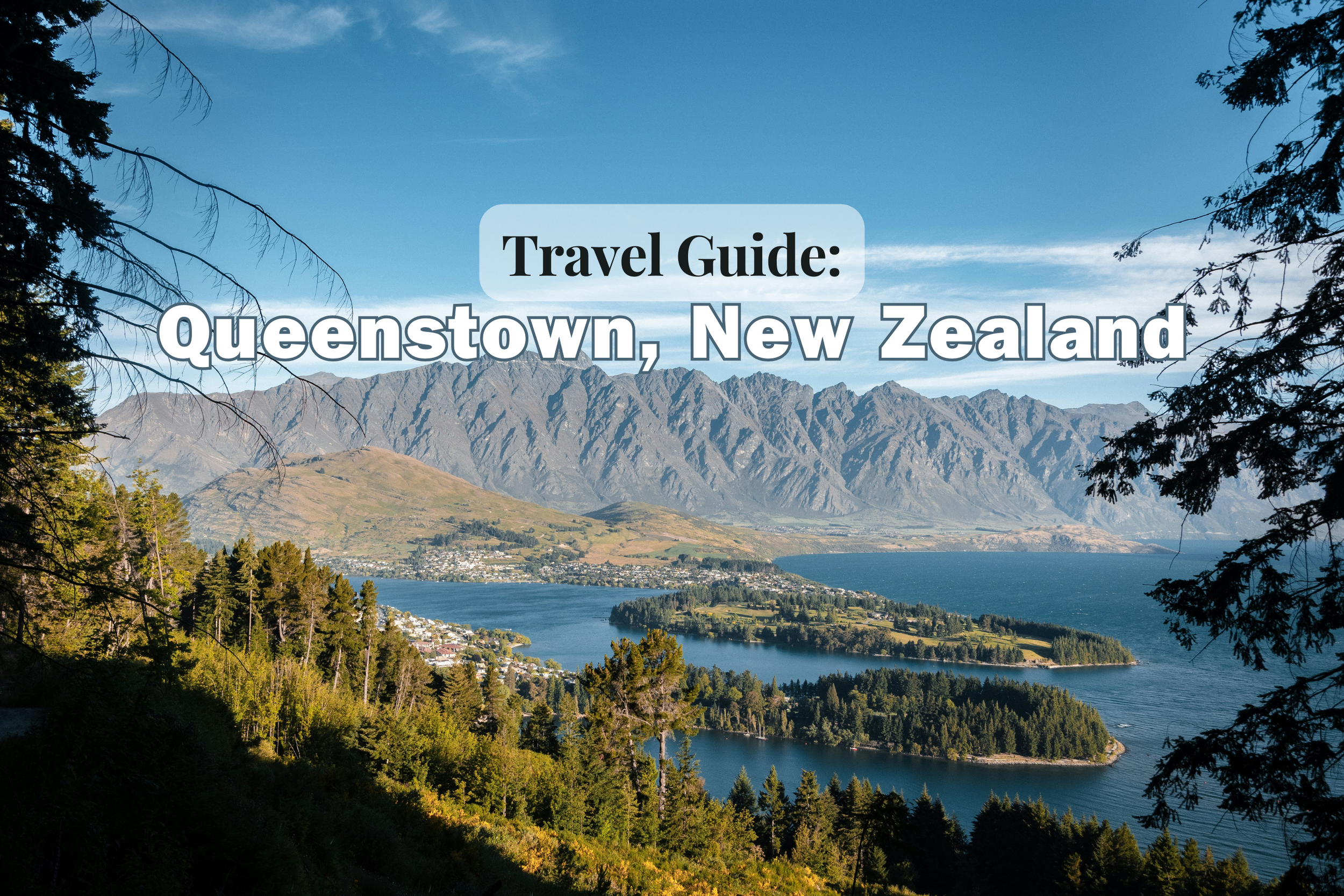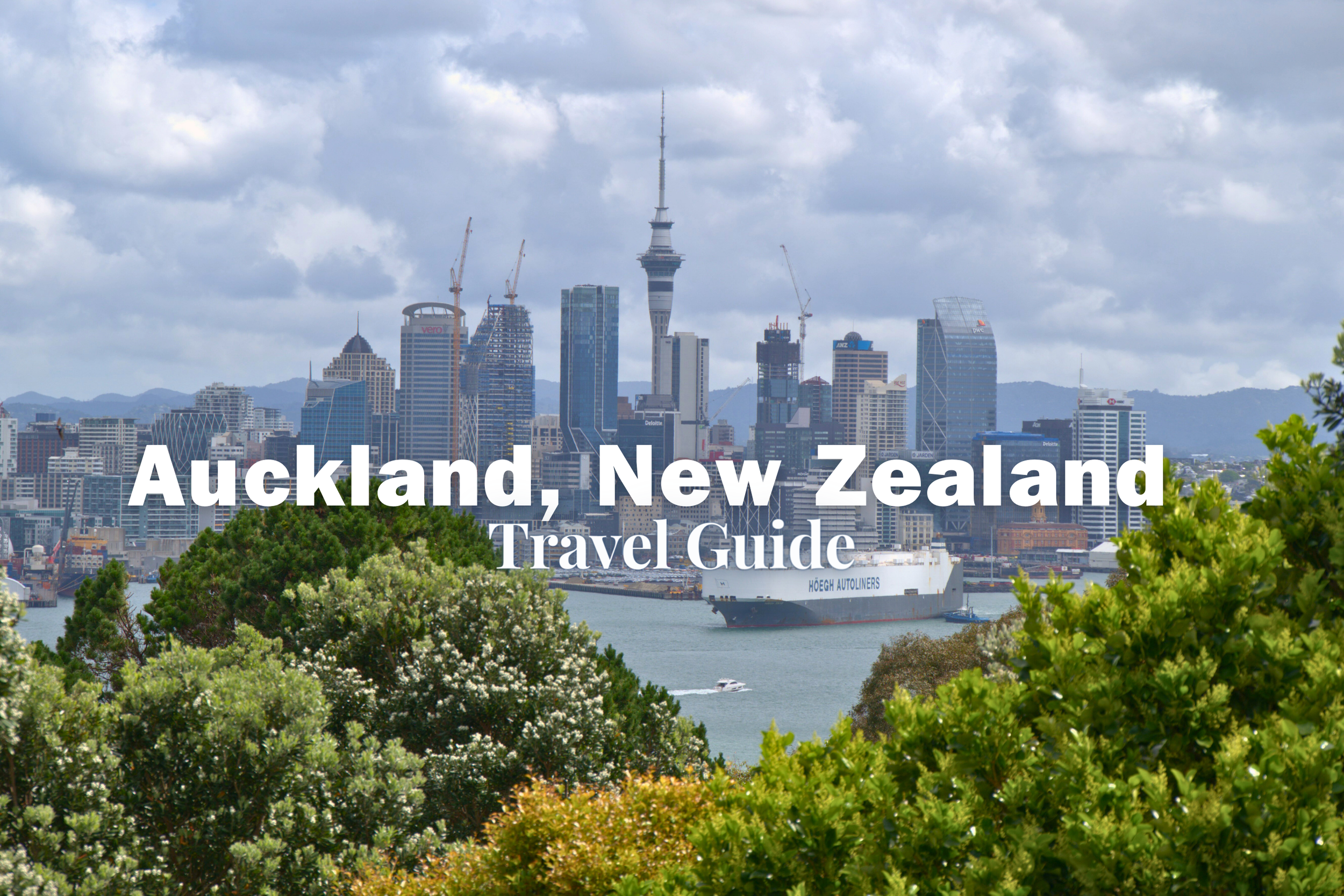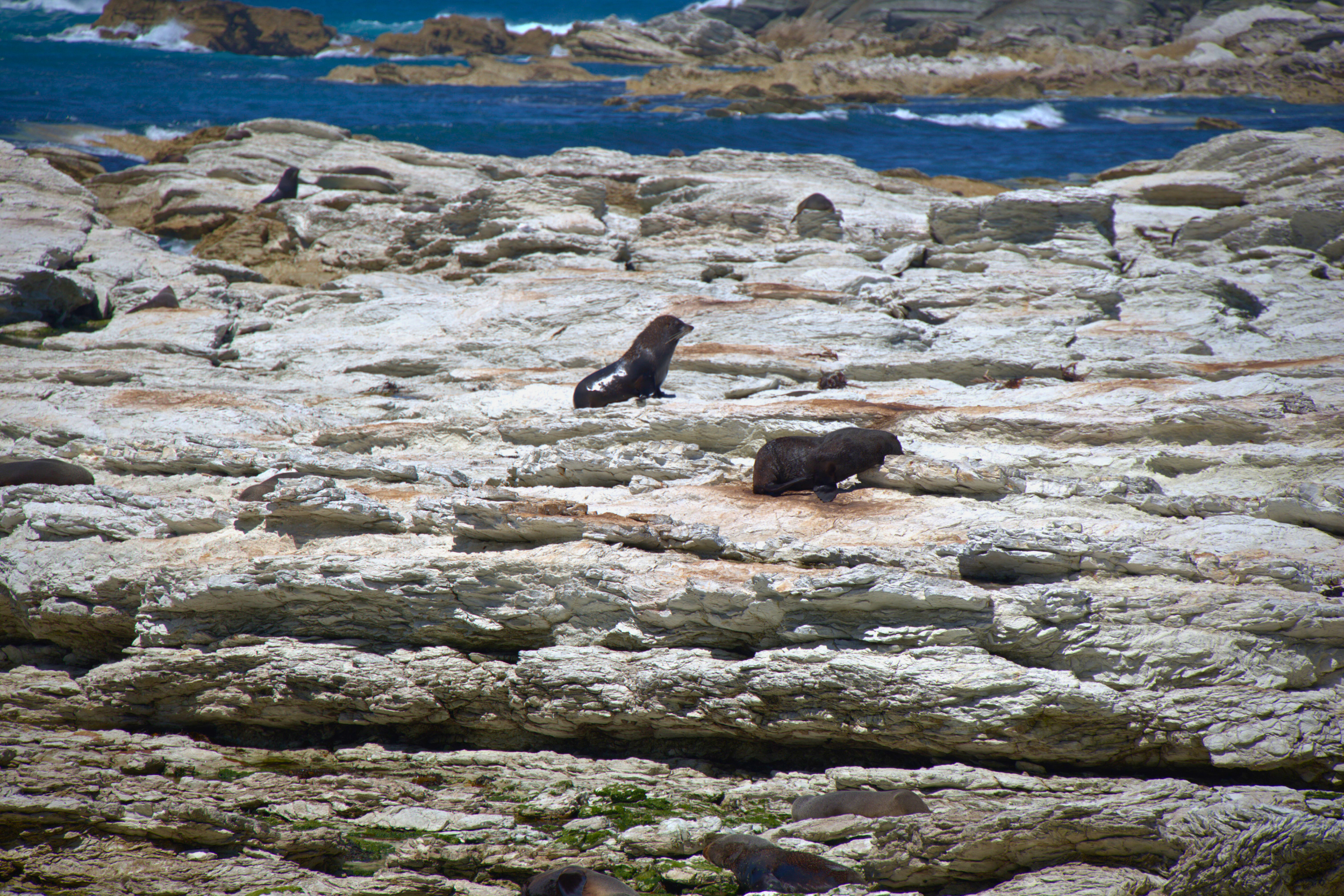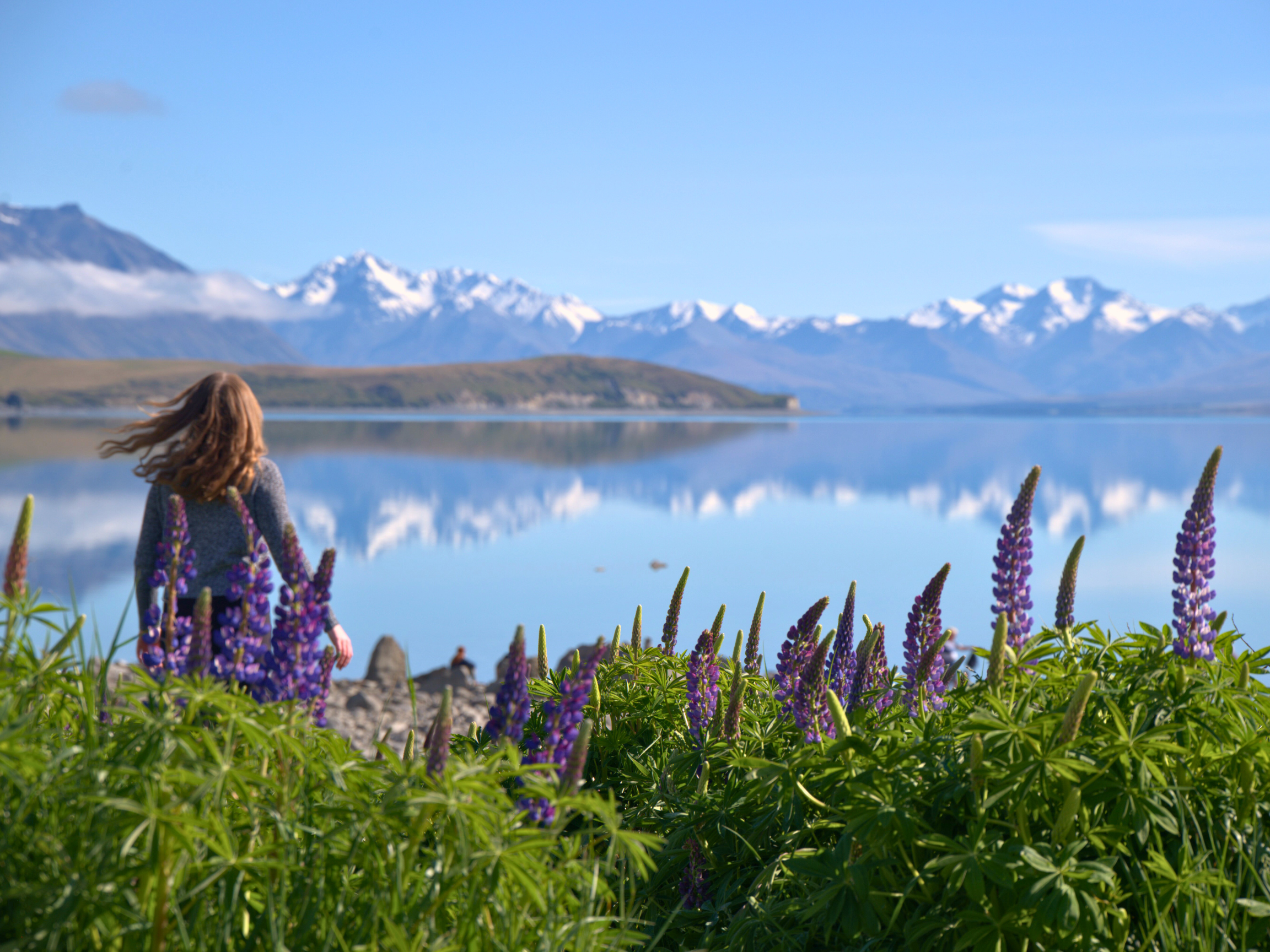
New Zealand Travel Guide: Everything You Need to Know Before Going
New Zealand
Embark on the adventure of a lifetime with our ultimate travel guide for visiting New Zealand. From navigating the diverse landscapes of the North and South Islands to savoring the unique flavors of Kiwi cuisine, this guide is your passport to an unforgettable journey. Packed with essential tips on culture, transportation, and must-see attractions, let this comprehensive resource be your trusted companion as you explore the breathtaking beauty and rich heritage of New Zealand.
Table of Contents
Brief Introduction to New Zealand
When to Visit
Visa and Entry Requirements
Currency and Banking
Transportation
Wildlife
Local Cuisine and Dining Tips
Health and Safety
Outdoor Activities & Top Hikes in New Zealand
National Parks and Scenic Sites
Cultural Experiences
Top 10 Places to Visit in New Zealand
Packing Tips
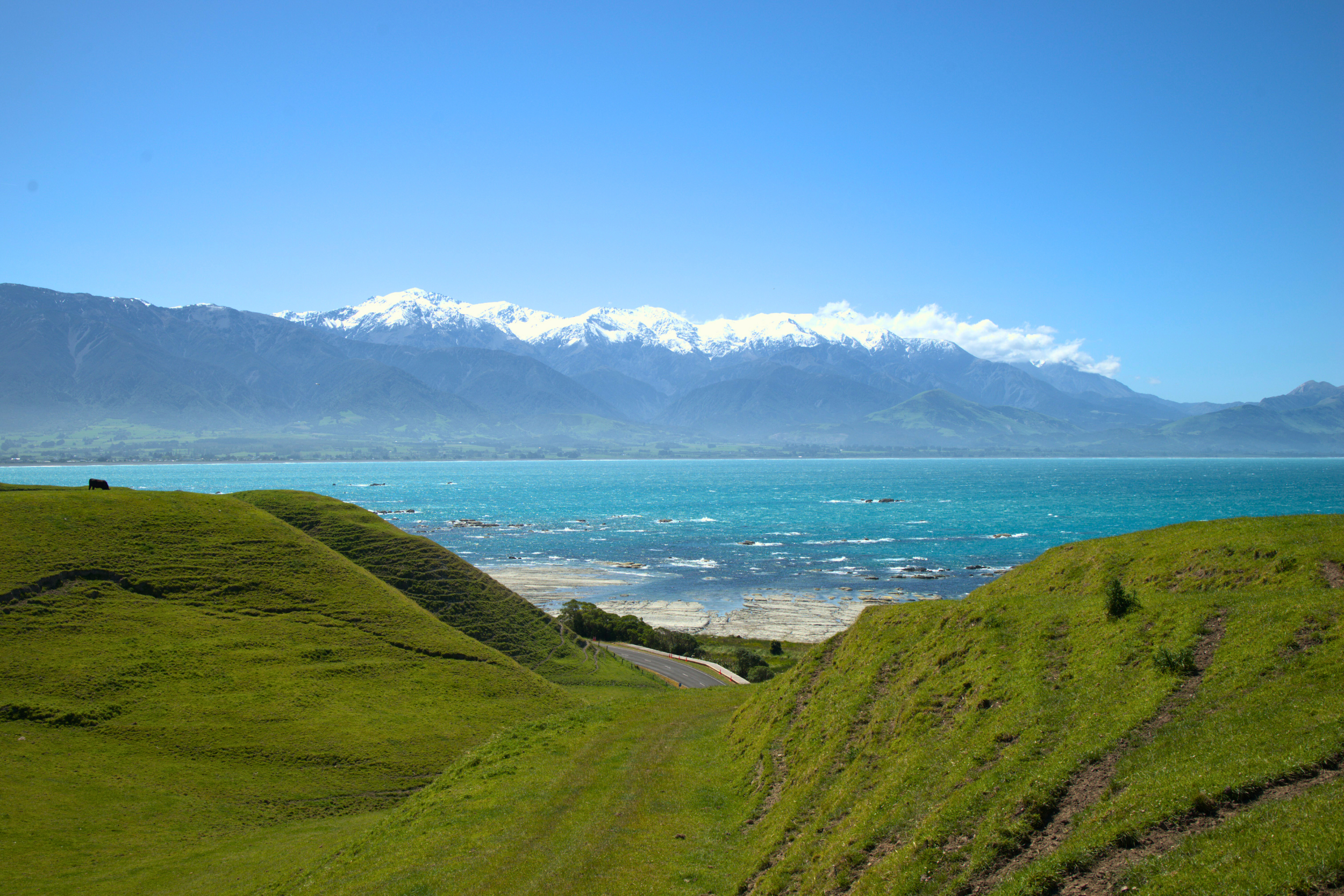
Nestled in the southwestern Pacific Ocean, New Zealand is a pristine haven renowned for its stunning landscapes, from snow-capped peaks and fjords to golden beaches and lush forests. Visiting this island nation for the first time promises an immersive journey into a realm where Maori traditions intertwine with modern adventure, inviting you to explore vibrant cities, engage in exhilarating outdoor activities, and witness nature's grandeur at every turn.
About New Zealand
New Zealand is an island nation located in the southwestern Pacific Ocean, southeast of Australia. It consists of two main islands, the North Island and the South Island, along with numerous smaller islands. The country's diverse geography encompasses mountains, fjords, beaches, and lush forests, creating a breathtaking tapestry of natural wonders.
Cultural Influences:
The cultural identity of New Zealand is shaped by a blend of Maori and European influences. The indigenous Maori people, who arrived in New Zealand over 1,000 years ago, contribute significantly to the country's cultural heritage.
European exploration and settlement, particularly by the British in the 19th century, further shaped the cultural landscape. This dual heritage is evident in everyday life, from the official recognition of both English and Maori as national languages to the fusion of culinary traditions.
Brief History:
New Zealand's human history dates back to the arrival of Polynesians, ancestors of the Maori, who settled in the islands around the 13th century. European exploration began in the late 18th century, with Captain James Cook mapping the coastline. The signing of the Treaty of Waitangi in 1840 between the British Crown and Maori chiefs marked the establishment of New Zealand as a British colony.
The subsequent waves of European migration, particularly during the gold rushes, had a profound impact on the demographics and culture of the islands. Over the years, New Zealand evolved into a self-governing dominion within the British Empire and eventually gained full independence in 1947.
Today, New Zealand is known for its progressive social policies, commitment to environmental conservation, and unique cultural identity that celebrates both Maori and European heritage. The country's history, marked by cooperation and coexistence, has contributed to its reputation as a welcoming and inclusive society.
Best Times to Visit New Zealand: A Seasonal Guide for Travelers
New Zealand's diverse climate and stunning landscapes offer something extraordinary in every season. Choosing the ideal time to visit depends on your preferences and the experiences you seek. Here's a seasonal breakdown to help you plan your dream itinerary:
Summer (December to February): Best for Outdoor Adventures and Festivals
Summer in New Zealand is synonymous with long days, warm temperatures, and endless outdoor possibilities. Ideal for hikers, beachgoers, and water sports enthusiasts, this season showcases the country at its vibrant best. Temperature Range: 20°C to 30°C (68°F to 86°F).
Weather: Warm and sunny with longer daylight hours. Expect occasional rain, especially on the North Island.
Autumn (March to May): Best for Scenic Beauty and Wine Enthusiasts
As temperatures begin to cool, New Zealand's landscapes transform into a tapestry of autumn hues. Vineyards in regions like Marlborough and Central Otago come alive with harvest activities. It's an excellent time for wine lovers to indulge in tastings and enjoy the picturesque surroundings. Temperature Range: 10°C to 25°C (50°F to 77°F)
Weather: Crisp and cool, with changing foliage. Milder temperatures make it an excellent time for outdoor activities with fewer crowds.
Winter (June to August): Best for Snow Sports and Unique Experiences
Winter brings a magical charm to New Zealand, especially in the Southern Alps. Skiing and snowboarding enthusiasts can hit the slopes in popular destinations like Queenstown and Wanaka. Temperature Range: 5°C to 15°C (41°F to 59°F)
Weather: Cool to cold temperatures, especially in the South Island. Winter brings snow to mountainous regions, offering opportunities for skiing and snowboarding.
Spring (September to November): Best for Blossoms and Wildlife
Spring breathes life into New Zealand, with blossoming flowers and newborn wildlife. The season is perfect for nature enthusiasts, bird watchers, and those seeking blooming gardens. As the weather warms up, outdoor activities become more appealing, and you can catch the tail end of ski season in some regions. Temperature Range: 10°C to 20°C (50°F to 68°F)
Weather: Mild temperatures with blossoming flowers and renewed greenery. Spring is a transitional period, with a mix of winter and summer conditions.
Visa and Entry Requirements for New Zealand
New Zealand has specific entry requirements and visa regulations that vary depending on the nationality of the traveler. It's crucial to check the latest information and updates on the official immigration website before planning your trip. Here's an overview of the common scenarios:
Visa-Free Countries: Citizens of visa-waiver countries, including the United States, Canada, the United Kingdom, and many European nations, can visit New Zealand for up to 90 days without obtaining a visa.
Visa on Arrival: Some nationalities not eligible for visa-free entry may obtain a visa on arrival. This typically applies to citizens of certain Pacific Island nations.
Electronic Travel Authority (ETA): Travelers from visa-waiver countries must obtain an ETA before boarding their flight to New Zealand. The ETA is an electronic authorization that can be applied for online.
Visitor Visa: Travelers from countries that are not visa-waiver and not eligible for an ETA must apply for a Visitor Visa before arriving in New Zealand. This visa allows for stays of up to nine months.
Working Holiday Visa: New Zealand offers working holiday schemes for citizens of specific countries, allowing young travelers to work and travel in the country for a specified period.
Currency & Banking System
The official currency of New Zealand is the New Zealand Dollar (NZD), denoted by the symbol "$" or "NZ$."
Banking Services: New Zealand's banking system is well-developed, with major banks providing a range of services such as savings and checking accounts, loans, and currency exchange. Commonly used banks include ANZ, ASB Bank, BNZ, and Westpac.
ATMs: ATMs are widely available in urban areas, towns, and tourist destinations throughout New Zealand. They accept major international debit and credit cards such as Visa, MasterCard, and American Express.
Credit Card Acceptance: Credit cards are widely accepted in New Zealand, especially in urban areas, hotels, restaurants, and larger retail establishments. Visa and MasterCard are the most commonly accepted cards. It's advisable to carry some cash for smaller establishments, markets, or more remote areas where card acceptance may be limited.
Transportation in New Zealand
Domestic Flights:
New Zealand's domestic flight network is well-developed, connecting major cities and regional hubs. Airlines like Air New Zealand and Jetstar operate regular flights, offering a convenient way to cover long distances quickly. Air travel is particularly popular for connections between the North and South Islands, providing stunning aerial views of the country's diverse landscapes.
Buses:
Intercity buses and coach services are a cost-effective and efficient means of traversing both islands. Companies like InterCity and ManaBus serve numerous routes, making stops in cities and towns. The bus network is an excellent option for budget-conscious travelers and those looking to appreciate the scenery during their journeys.
Rental Cars:
Renting a car is a popular choice for exploring New Zealand at your own pace. International and local car rental companies offer a wide range of vehicles, including campervans for those seeking a unique road trip experience. The well-maintained road infrastructure, scenic routes, and easy navigation make self-driving an enjoyable option. Remember to drive on the left side of the road.
Trains:
While New Zealand's passenger train services are limited compared to some countries, scenic train journeys like the TranzAlpine and the Northern Explorer offer an immersive experience through breathtaking landscapes. These routes showcase the country's diverse terrain, from the Southern Alps to lush farmland.
Ferries:
The Cook Strait, which separates the North and South Islands, is traversed by a scenic ferry journey. The Interislander and Bluebridge ferry services operate between Wellington in the North Island and Picton in the South Island. The journey is not only a convenient mode of transportation but also a breathtaking introduction to the stunning landscapes of both islands.
New Zealand's Unique Wildlife
New Zealand boasts a distinctive array of wildlife shaped by its isolation and evolutionary history. As an island nation with a limited history of mammalian predators before human arrival, many of its species are unique, endemic, and adapted to its diverse ecosystems. Here's an overview of the overall wildlife:
Birds: New Zealand is renowned as the seabird capital of the world, hosting a plethora of unique avian species. In addition to the iconic Kiwi, the country is home to the playful Kea, the world's only alpine parrot, and the Takahe, an endangered flightless bird resembling a colorful rail. The Kaka, Kakapo (night parrot), and the Fantail are other notable bird species found throughout the islands.
Marine Life: The surrounding waters teem with marine life, from the smallest endemic fish to majestic marine mammals. Hector's Dolphin and the New Zealand Fur Seal inhabit coastal waters, while offshore, the Dusky Dolphin and the critically endangered Maui's Dolphin can be spotted. The region is also frequented by migratory species such as the Southern Right Whale and Orca.
Conservation Challenges: While New Zealand's biodiversity is extraordinary, it faces significant conservation challenges. Introduced predators, habitat loss, and human impact have led to the endangerment of several species. Conservation efforts and wildlife sanctuaries, such as Zealandia in Wellington and Orokonui Ecosanctuary in Dunedin, play a crucial role in protecting native flora and fauna.
Unique Plant Life: New Zealand's wildlife extends beyond animals to include unique plant life. The native forests are home to ancient trees like the Kahikatea, Rimu, and Totara. The distinctive Silver Fern is an iconic symbol of New Zealand, featured on the country's flag.
New Zealand's Culinary Delights
New Zealand's culinary scene is a vibrant mosaic of flavors, blending indigenous Maori traditions with European influences and a farm-to-table ethos. From innovative fine dining to hearty comfort food, here's a glimpse into the diverse culinary landscape:
Traditional Dishes:
Hangi: A traditional Maori method of cooking that involves slow-cooking food in an earth oven. Meats, vegetables, and sometimes seafood are infused with a unique smoky flavor.
Pavlova: A beloved dessert featuring a crisp meringue shell, soft interior, and topped with whipped cream and fresh fruits, often the subject of friendly debate with Australia over its origin.
Seafood Delights: Given its island geography, New Zealand boasts a rich abundance of seafood. Green-lipped mussels, Bluff oysters, and whitebait are popular delicacies. Fish and chips, a Kiwi classic, is often enjoyed by the seaside.
Farm-to-Table Cuisine: New Zealand's fertile land and commitment to sustainability contribute to a thriving farm-to-table movement. Locally sourced ingredients take center stage in dishes that celebrate the freshness and quality of New Zealand produce.
Award-Winning Wines: New Zealand's wine regions, particularly Marlborough for Sauvignon Blanc and Central Otago for Pinot Noir, have gained international acclaim. Wineries offer tastings, and many restaurants boast extensive wine lists to complement their menus.
Popular Eateries:
Fergburger (Queenstown): Renowned for its gourmet burgers, Fergburger is an iconic eatery that draws locals and tourists alike.
Ortega Fish Shack (Wellington): A seafood haven with a casual and lively atmosphere, serving delectable dishes made from the freshest catch.
Giapo (Auckland): An avant-garde ice cream parlor offering imaginative and visually stunning creations, pushing the boundaries of traditional ice cream.
Maori Kai and Cultural Experiences: Engage in Maori culinary traditions through cultural experiences like a Hangi feast or tasting traditional Maori dishes like Rewena bread, a sourdough-like bread with a unique taste.
Health and Safety in New Zealand
New Zealand is renowned for its pristine landscapes and welcoming atmosphere, but like any destination, it's crucial for visitors to prioritize health and safety. Here's essential information to ensure a safe and enjoyable journey:
Emergency Services: Dial 111 for police, fire, or medical emergencies; 105 (for non-emergencies).
Healthcare Facilities: New Zealand has a well-regarded healthcare system. In the case of non-emergency medical issues, visit a local medical center or general practitioner (GP). For emergencies, head to the nearest hospital or call an ambulance. Pharmacies (called "chemist" or "drugstore" locally) are widely available for over-the-counter medications and minor health concerns.
Precautions and Health Tips:
Sun Protection: New Zealand experiences high levels of ultraviolet (UV) radiation. Always wear sunscreen, a hat, and sunglasses to protect yourself from the sun.
Weather Variability: Weather conditions can change rapidly. Pack layers and be prepared for rain, especially in coastal and mountainous regions.
Outdoor Safety: If engaging in outdoor activities such as hiking or water sports, inform someone about your plans, carry sufficient water, and be aware of weather forecasts and trail conditions.
Water Safety: New Zealand's waters can be cold. Take precautions when swimming, especially in rivers or at beaches without lifeguards.
Wildlife Caution: While encounters with dangerous wildlife are rare, be cautious around native birds and seals, and adhere to safety guidelines during outdoor adventures.
Driving Safety: If driving, familiarize yourself with New Zealand's road rules, which include driving on the left side of the road. Ensure you have a valid driver's license and adhere to speed limits.
Outdoor Activities To Do in New Zealand
New Zealand is a playground for outdoor enthusiasts, offering a diverse range of thrilling activities amidst breathtaking landscapes. From epic hikes to heart-pounding water sports, here's a guide to some of the exhilarating outdoor adventures:
Hiking and Trekking:
Top Hiking Trails in New Zealand
Tongariro Alpine Crossing:
Location: Tongariro National Park, North Island.
Distance: Approximately 19.4 kilometers (12 miles).
Highlights: Volcanic landscapes, emerald lakes, and views of Mount Ngauruhoe (Mount Doom in "The Lord of the Rings").
Notes: Challenging day hike with changing weather conditions. A designated Great Walk.
Milford Track:
Location: Fiordland National Park, South Island.
Distance: Approximately 53.5 kilometers (33.2 miles).
Highlights: Fiordland's rainforests, waterfalls, and the iconic Mackinnon Pass.
Notes: One of the Great Walks, the Milford Track requires advance booking, and guided walks are also available.
Abel Tasman Coast Track:
Location: Abel Tasman National Park, South Island.
Distance: Approximately 60 kilometers (37 miles).
Highlights: Golden beaches, turquoise waters, and coastal scenery.
Notes: Can be hiked in sections, and water taxis offer transportation to different trailheads.
Routeburn Track:
Location: Fiordland and Mount Aspiring National Parks, South Island.
Distance: Approximately 32 kilometers (20 miles).
Highlights: Alpine scenery, mountainous landscapes, and the Routeburn Falls.
Notes: Another of the Great Walks, offering stunning views of the Southern Alps.
Kepler Track:
Location: Fiordland National Park, South Island.
Distance: Approximately 60 kilometers (37 miles).
Highlights: Views of Lake Te Anau, Luxmore Caves, and alpine landscapes.
Notes: Another of the Great Walks, with options for both guided and independent hiking.
Hooker Valley Track:
Location: Aoraki/Mount Cook National Park, South Island.
Distance: Approximately 10 kilometers (6.2 miles).
Highlights: Spectacular views of Aoraki/Mount Cook, suspension bridge crossings, and the Hooker Glacier.
Notes: A relatively easy day hike with breathtaking alpine scenery.
Skiing and Snowboarding:
Popular Spots:
Queenstown and Wanaka Key Ski Resorts:
Coronet Peak: Located near Queenstown, Coronet Peak offers a range of terrain for all levels of skiers and snowboarders. Night skiing is also available.
The Remarkables: Another Queenstown gem, The Remarkables provides diverse terrain with stunning views of Lake Wakatipu.
Cardrona Alpine Resort: Nestled between Queenstown and Wanaka, Cardrona is renowned for its wide-open slopes and terrain parks.
Wanaka Key Ski Resorts:
Treble Cone: Known for its extensive terrain and breathtaking views, Treble Cone is the largest ski area in the South Island.
Cardrona Alpine Resort: As mentioned earlier, Cardrona is easily accessible from both Queenstown and Wanaka, making it a popular choice for skiers in the region.
Water Sports:
Popular Spots:
Bay of Islands: Kayaking and sailing.
Rotorua: White-water rafting.
Bungee Jumping:
Popular Spots:
Queenstown: Kawarau Bridge and Nevis Bungy.
Taupo: Taupo Bungy.
Skydiving:
Popular Spots:
Fox Glacier: Skydive Franz Josef.
Taupo: Taupo Tandem Skydiving.
Mountain Biking:
Popular Spots:
Rotorua: Whakarewarewa Forest.
Queenstown: Queenstown Bike Park.
Surfing:
Popular Spots:
Raglan: Renowned for long left-hand breaks.
Piha Beach: Iconic black sand beach near Auckland.
Must-Visit Parks, Reserves, and Landmarks
New Zealand's landscapes are a captivating blend of lush forests, towering mountains, pristine lakes, and dramatic coastlines. Here's a guide to must-visit national parks, scenic reserves, and iconic landmarks:
1. Fiordland National Park (South Island):
Highlights:
Milford Sound: Embark on a cruise to witness the majesty of towering waterfalls and sheer cliffs.
Doubtful Sound: A more remote and tranquil fjord, accessible by boat or kayak.
Routeburn Track: A Great Walk offering stunning alpine scenery.
2. Tongariro National Park (North Island):
Highlights:
Tongariro Alpine Crossing: A challenging day hike through volcanic landscapes, including emerald lakes.
Mount Ruapehu: New Zealand's largest volcano, offering skiing and hiking opportunities.
Taranaki Falls: A picturesque waterfall accessible via an easy walking track.
3. Abel Tasman National Park (South Island):
Highlights:
Abel Tasman Coast Track: A coastal trail with golden beaches and opportunities for kayaking.
Tonga Island Marine Reserve: Snorkel or dive to explore vibrant marine life.
Split Apple Rock: An iconic granite rock formation in Tasman Bay.
4. Mount Cook National Park (South Island):
Highlights:
Aoraki/Mount Cook: New Zealand's highest peak, surrounded by alpine beauty.
Hooker Valley Track: A popular hike offering stunning views of Aoraki/Mount Cook.
Tasman Glacier: Take a boat tour to witness icebergs on the glacial lake.
5. Rotorua - Te Puia and Wai-O-Tapu (North Island):
Highlights:
Te Puia: Explore geothermal wonders, including the Pohutu Geyser and bubbling mud pools.
Wai-O-Tapu Thermal Wonderland: A surreal landscape featuring the Champagne Pool and colorful hot springs.
6. Waitomo Caves (North Island):
Highlights:
Glowworm Caves: Take a boat ride through caves illuminated by thousands of glowworms.
Ruakuri Cave: An underground adventure with glowworm displays and limestone formations.
7. Fox and Franz Josef Glaciers (South Island):
Highlights:
Fox Glacier: Guided hikes and helicopter tours to explore the glacier's icy terrain.
Franz Josef Glacier: Helicopter landings and hot pools for a post-glacier adventure soak.
8. Lake Tekapo and Church of the Good Shepherd (South Island):
Highlights:
Lake Tekapo: Known for its stunning turquoise waters, framed by the Southern Alps.
Church of the Good Shepherd: A picturesque church offering breathtaking views of the lake and mountains.
9. Cape Reinga and Ninety Mile Beach (North Island):
Highlights:
Cape Reinga: The northernmost point of New Zealand, where the Tasman Sea meets the Pacific Ocean.
Ninety Mile Beach: A vast, drivable beach along the western coast.
Immersive Cultural Experiences and Museums
New Zealand's rich history and cultural heritage are brought to life through a variety of events, museums, and immersive experiences. Here are recommendations to deepen your understanding of New Zealand:
Te Papa Tongarewa - Museum of New Zealand (Wellington):
Maori Treasures: Explore Maori artifacts, including the world-renowned carved meeting houses.
Awesome Forces: Experience New Zealand's geological wonders, including earthquakes and volcanoes.
Passport to the World: Discover the country's social and cultural history through interactive exhibits.
Waitangi Treaty Grounds (Bay of Islands):
Te Whare Runanga: Visit the Maori meeting house adorned with intricately carved panels.
The Treaty House: Explore the site where the Treaty of Waitangi was signed in 1840.
Cultural Performances: Attend traditional Maori cultural performances and ceremonies.
Tamaki Maori Village (Rotorua):
Cultural Village Tour: Immerse yourself in Maori traditions, including a traditional welcome ceremony.
Hangi Feast: Enjoy a traditional Maori feast cooked in an earth oven.
Interactive Performances: Witness powerful haka performances and learn about Maori arts and crafts.
Otago Museum (Dunedin):
Tangata Whenua Gallery: Explore the history and culture of the indigenous Maori people.
Southern Land, Southern People: Discover the natural and cultural heritage of the Otago region.
Special Exhibitions: Check for rotating exhibits that delve into various aspects of New Zealand's history and identity.
Arts Centre - Christchurch Arts Centre Te Matatiki Toi Ora (Christchurch):
Rutherford's Den: Explore the historic laboratory of Nobel laureate Ernest Rutherford.
Bread & Circus – World Buskers Festival: Attend this lively festival celebrating street performance, circus, and comedy.
Various Workshops and Events: Participate in cultural and artistic workshops offered at the Arts Centre.
Toi Māori Aotearoa - Māori Arts New Zealand:
Marae Visits: Engage in marae experiences, including powhiri (traditional welcome ceremonies).
Contemporary Māori Art Exhibitions: Explore modern Māori art at galleries and exhibitions.
Kapa Haka Performances: Attend traditional Māori performing arts showcases.
Top 10 Places to Visit in New Zealand
Here are the top 10 places to visit in New Zealand, representing a diverse range of attractions across both the North and South Islands:
1. Fiordland National Park (South Island):
Milford Sound and Doubtful Sound: Majestic fjords with towering cliffs and waterfalls.
Kepler Track: One of New Zealand's Great Walks with stunning alpine scenery.
2. Glenorchy (South Island):
Glenorchy Lagoon Boardwalk: Take a stroll along the lagoon boardwalk, enjoying views of the surrounding mountains.
Scenic Flights: Take a scenic flight over Fiordland and Milford Sound for an aerial perspective of the landscapes.
3. Abel Tasman National Park (South Island):
Abel Tasman Coast Track: A coastal trail with golden beaches and opportunities for kayaking.
Split Apple Rock: Iconic granite rock formation in Tasman Bay.
4. Auckland (North Island):
Sky Tower: Panoramic views of the city from the tallest structure in the Southern Hemisphere.
Devonport: Take a ferry over to the town of Devonport to take in the quaint town and sweeping views from Mount Victoria.
5. Queenstown (South Island):
Remarkables and Coronet Peak: Ski resorts with breathtaking alpine views.
Lake Wakatipu: Scenic cruises and outdoor adventures in the stunning lake setting.
6. Fox and Franz Josef Glaciers (South Island):
Guided hikes and helicopter tours to explore the icy terrain.
Hot pools for a post-glacier adventure soak.
7. Wellington (North Island):
Te Papa Tongarewa: The national museum showcasing New Zealand's art, history, and culture.
Mount Victoria: Panoramic views of the city and harbor.
8. Christchurch (South Island):
Canterbury Museum: Explore natural and cultural history.
Botanic Gardens: Relax in the beautiful gardens near the Avon River.
9. Lake Tekapo (South Island):
Turquoise waters of Lake Tekapo against the backdrop of the Southern Alps.
Church of the Good Shepherd for picturesque views.
10. Kaikoura (South Island) - highlights include:
Whale watching: Witness majestic whales in their natural habitat.
Seal Colony: Observe seals basking on the rocks.
Related Blogs:
Discovering Kaikōura: The Ultimate Travel Guide to New Zealand's Coastal Gem
Everything to Know About Lake Tekapo, New Zealand
Traverse Auckland: A Traveler's Handbook to New Zealand's Heart
Comprehensive Packing List
New Zealand's diverse landscapes and climates require careful consideration when packing for your trip. From hiking in alpine regions to exploring coastal cities, here's a comprehensive packing list to ensure you're prepared for the variety of activities and weather conditions across the islands:
Clothing:
Lightweight, Moisture-Wicking Layers:
Long-sleeved shirts and pants for sun protection.
T-shirts and shorts for warmer days.
Insulating Layers:
Fleece jacket or down jacket for cooler evenings and alpine environments.
Waterproof and Windproof Jacket:
Essential for unpredictable weather, especially in regions like Fiordland.
Comfortable Walking Shoes:
Sturdy hiking boots for trails and walks.
Comfortable sneakers for urban exploration.
Swimwear
Hat and Sunglasses:
Wide-brimmed hat for sun protection.
Polarized sunglasses with UV protection.
Gloves and Beanie
Outdoor Gear:
Daypack:
For carrying essentials during day trips and hikes.
Waterproof Backpack Cover or Dry Bags:
Keep your belongings dry during rain or water activities.
Trekking Poles: Useful for longer hikes, especially in hilly or mountainous areas.
Travel Umbrella: Compact and lightweight for unexpected rain showers.
Travel Towel
Electronics:
Universal Power Adapter: New Zealand uses Type I electrical sockets.
Camera and/or Smartphone
Portable Charger
Health and Safety:
Personal Medications
First Aid Kit: Including bandages, antiseptic cream, and pain relievers.
Insect Repellent: Especially for bushwalks and evenings outdoors.
Sunscreen: New Zealand has high UV levels, even on cloudy days.
Documents and Essentials:
Passport and Travel Insurance
New Zealand SIM Card or Roaming Plan
Credit/Debit Cards
Reusable Water Bottle
Travel-Sized Shampoo and Conditioner
Wet Wipes and Hand Sanitizer
Miscellaneous:
Backpacking or Packing Cubes
Travel Pillow
Reusable Shopping Bag
Notebook and Pen
Tips:
Layering is Key: New Zealand's weather can change rapidly, so bring layers to adjust to temperature variations.
Choose Quick-Dry Fabrics: Especially for outdoor activities, quick-dry clothing is practical in case of rain or sweat.
Check Activity-Specific Gear: Depending on your planned activities (e.g., skiing, hiking, or water sports), ensure you have the necessary gear.


